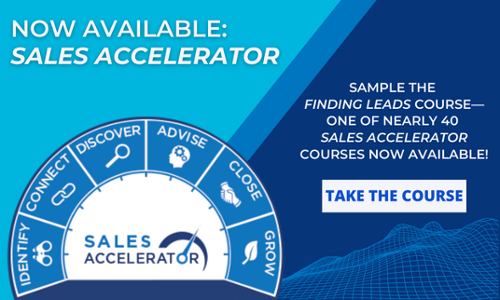 EDITOR’S NOTE: This post is by the late Steve Marx, and was written and published in 2015. To keep it current, we’ve updated the content to be relevant, but preserved the knowledge that Steve shared.
EDITOR’S NOTE: This post is by the late Steve Marx, and was written and published in 2015. To keep it current, we’ve updated the content to be relevant, but preserved the knowledge that Steve shared.
There are countless lists of what the most successful salespeople actually do. It’s time for a list of what they don’t do.
Let’s call it "The Un-Checklist"—the list you review when no one is looking over your shoulder (so you can be entirely honest), and where you hope that your honesty doesn’t force you to check off any of the items.
Get out your pen, ink, or virtual notes. I hope you won’t need to use them.
10 Things the Best Salespeople Never Do
1. Neglect the Prospect’s Agenda
Regardless of who requested the appointment, you, or the prospect, they always have an agenda. When you start without knowing their agenda, you lose them at "hello." But if you start by asking them to disclose their agenda (e.g., Why did you agree to speak with me? or Why did you request this meeting?), they know instantly that you care about them and their needs. And what you say or ask next is automatically better because you asked.
2. Start Selling Without Knowing the Prospect’s Needs
This puts you in quicksand in two different ways. It’s more than knowing their agenda, it's their reason for meeting with you. A clear and fairly-comprehensive understanding of their needs (How comprehensive? That depends on what you’re selling.) improves your recommendations ten-fold. The other reason it pulls you out of the quicksand is that the prospect naturally trusts your recommendations when he is certain you know his needs well, and vice versa. This is especially true when you’re selling something fairly technical and the prospect doesn’t have the same level of technical expertise.
3. Sell Benefits Out of Context
Yes, yes, that product or service has a fabulous set of benefits. But it’s a sure bet that not all those benefits are of equal value to this prospect at this time. Mention only those benefits that are related to the prospect’s needs as determined, and describe those benefits in the context of those needs. I’d call this magic, but if you know how and why it works, it’s not magic, is it?
4. Sell Products and Services at All!
That’s right. Stop selling your stuff, and start selling solutions. The difference is often very small, but always very powerful. A solution is a product or service sold in the context of a need—but it’s more than that. A solution typically involves a tailored set of products and/or services; salespeople who sell solutions are thus prompted to consider and include all the pieces and parts necessary for success. And calling it a solution adds value.
5. Outpace the Prospect
You’ve read and seen for yourself that prospects are busy. But that doesn’t always mean they’ll be happy to move at whatever speed you want to move. Keep your antennae fully extended, and watch for signs that the prospect is not tracking perfectly with you (Warning: it might look like impatience and therefore might confuse you). When you see it, slow down. Retrace your steps if necessary. When prospects feel hurried, they instinctively back off. Once they’ve stood up and extended their hand in "Thanks for visiting today," it’s too late—so don’t get that far out front.
6. Let the Prospect See You Putting Yourself First
I see this one so often, it amazes me. This is the salesperson that, for example, discloses that there’s a spiff being paid this month on sales of this product, or contest running right now with a prize for the person who sells the most of the service he’s pushing at that moment. Really? Unless the prospect is your mom (in which case she is either your first prospect or your very last), this is poison.
7. Wing It
Need I even mention this? Sure, you’re quite adept at winging it. And there are times when you must. But if an appointment was set for later (later is more than 15 minutes away), there’s no excuse for not being prepared, for not having done your homework, for relying on your dancing shoes. The prospect will know it, nine times out of ten. And you’ll suffer for it.
8. Oversell
Proposing more than the prospect needs is one of those short-term pleasures that too often leads to long-term pain. You got the big order, and whatever rewards go with it. But you’ll pay later—when the client figures it out, or derives a crummy ROI, or has your greed pointed out by a savvy salesperson representing a competitor who’s straight up.
9. Undersell
This is equally bad. In fact, I can make the case that you’re stealing the client’s money even more when you sell too little than when you sell too much. Most solutions need to be scaled—to both the size of the problem and the size of the prospect. When you undersell, you’re often relegating the prospect to an ROI that’s even more impaired than had you oversold.
10. Mess Around With the Truth
If this is how you seek success, you’ll get a reputation that’s tough to shake. And that reputation will hit you hard in three ways: The results you’re not able to produce for your clients, the renewals or reorders you don’t get, and the referrals that don’t come your way.
You can probably think of a few more sales "no-no's." Add them to the list, and make sure you never do any of them.


